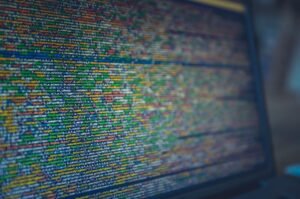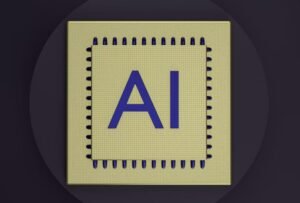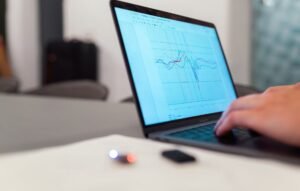Can AI Art Be Banned?
Artificial Intelligence (AI) has made significant advancements in recent years, particularly in the field of art. AI-generated artwork, created by algorithms and machine learning, has gained attention and acclaim. However, this has raised ethical and legal questions about the originality and ownership of AI-generated art. One of the key concerns is whether AI art should be banned or regulated under existing copyright laws.
Key Takeaways:
- AI-generated art has sparked ethical and legal debates.
- Concerns about originality and ownership of AI art have led to discussions of banning or regulating it.
- Existing copyright laws may not adequately address the unique challenges posed by AI art.
- Defining authorship and ownership of AI-generated artwork is complex.
- Considering the potential cultural and artistic value of AI art is important in shaping regulations.
**The copyright laws that govern traditional artwork were not designed for AI-generated art.** While traditional copyright laws grant exclusive rights to creators, AI art raises questions about who should be considered the author or owner of the art. The process of generating AI art involves a combination of human programming and machine learning algorithms, making it challenging to attribute sole authorship. Additionally, AI systems have the ability to continuously learn and create new works, further blurring the lines of ownership.
**Setting clear definitions and guidelines for AI art ownership and authorship is necessary.** As AI-generated art becomes more prevalent, it becomes crucial to establish guidelines for determining ownership and authorship. This could involve creating a new legal framework that acknowledges the collaborative nature of AI-created works, potentially involving both the human programmers and AI systems as co-authors. Alternatively, assigning ownership to the AI system itself could be explored as a solution.
| Advantages | Description |
|---|---|
| Protection of artists | Regulations can ensure that artists receive recognition and compensation for their AI-generated works. |
| Moral and ethical considerations | Regulating AI art can address potential ethical issues, such as the use of copyrighted materials or content generated by biased algorithms. |
| Promotion of creativity | Regulations can encourage innovation by preventing the misuse of AI technology in art. |
**Regulating AI art can protect artists and ensure fair compensation.** Without regulations, artists might struggle to assert their rights and receive appropriate recognition and financial compensation for their AI-generated creations. Establishing legal frameworks can protect artists from unauthorized use or exploitation of their works, promoting a more equitable environment for creators.
**Ethical considerations must be addressed through regulation.** AI-generated art raises concerns about the potential misuse of copyrighted materials, the generation of artwork reliant on biased algorithms, or the creation of art that violates cultural norms. Regulation can help address these ethical considerations and ensure ethical AI practices in art creation and consumption.
| Disadvantages | Description |
|---|---|
| Stifling innovation | A ban could hinder the exploration of new artistic possibilities and stifle creativity in the AI art realm. |
| Freedom of expression | Restricting AI art could infringe on artists’ freedom of expression and limit artistic experimentation. |
| Subjectivity in banning criteria | Determining what qualifies as AI art and what should be banned can be subjective and challenging. |
**Banning AI art may hinder innovation and artistic exploration.** The intersection of AI and art has opened new possibilities for creativity and expression. By banning AI art, potential artistic advancements and groundbreaking works may be stifled, limiting the potential growth and development of the art form.
**Protecting freedom of expression is crucial in the regulation of AI art.** Art has long been a medium for expressing diverse ideas and concepts. Restricting AI art through bans may infringe upon artists’ freedom of expression and hinder the exploration of unconventional and innovative artistic styles.
Current and Future Approaches to Regulating AI Art
- **Intellectual property laws may need to be revised or expanded to address AI art.** Existing copyright laws, such as the Digital Millennium Copyright Act (DMCA), might need to be updated to address the unique challenges posed by AI-generated art. This could involve considering AI systems as legal authors or establishing new criteria for determining copyright ownership.
- **Collaborative efforts between artists, legal experts, and AI developers are crucial in shaping regulations.** Bringing together diverse perspectives can help create balanced regulations that protect artists’ rights, address ethical concerns, and encourage innovation.
Is a Ban on AI Art Feasible?
**Completely banning AI art presents significant challenges and limitations.** The ever-evolving nature of AI technology makes it difficult to impose comprehensive bans. Additionally, enforcing such bans would require extensive monitoring and regulation of AI-generated content, which may not be practical or effective.
**A balanced approach that considers both regulation and innovation is necessary for AI art.** Instead of outright bans, efforts should focus on creating informed regulations that strike a balance between protecting artist rights, addressing ethical concerns, and fostering creativity and innovation in AI art.

Common Misconceptions
Misconception 1: AI Art can be easily regulated and banned
- AI art is created by algorithms and machine learning models that are constantly evolving, making it difficult to regulate.
- AI art can be easily distributed and shared online, making it challenging to enforce a ban on specific art pieces or styles.
- It is nearly impossible to ban the development and research of AI art as it involves a wide range of technological advancements.
Misconception 2: AI Art poses no ethical concerns and does not require regulation
- AI art raises ethical questions regarding the source of the training data used by the algorithms, as biased or discriminatory datasets can lead to problematic artworks.
- AI art challenges the traditional notions of authorship and intellectual property, thus requiring new regulations to address copyright and ownership issues.
- Regulation is needed to prevent the misuse of AI algorithms in creating deceptive or harmful art that may be used for propaganda or misinformation.
Misconception 3: AI Art is not as valuable or creative as human-created art
- AI art can push the boundaries of creativity and offer unique perspectives that humans may not have thought of.
- AI algorithms can analyze vast amounts of data and create art that reflects diverse cultural influences, resulting in new and innovative artistic expressions.
- The value of AI art lies in its ability to challenge and disrupt traditional artistic practices, fostering new conversations and sparking critical thinking.
Misconception 4: AI Art will replace human artists
- AI art is a tool that can assist and inspire human artists, helping them generate novel ideas or explore new artistic styles.
- The human element in art, such as emotions, intentions, and interpretations, cannot be replicated by AI algorithms alone.
- The collaboration between AI and human artists can lead to exciting and unexpected artistic creations that combine the strengths of both.
Misconception 5: Banning AI Art will protect the artistic field
- Banning AI art would hinder technological advancements and limit the exploration of new artistic techniques and possibilities.
- Instead of banning AI art, it is essential to encourage dialogue and establish ethical guidelines to ensure responsible and inclusive development and use of AI in the artistic domain.

The Rise of AI Art
Over the past decade, artificial intelligence (AI) has made remarkable strides in various fields, including art. AI-generated art has been gaining attention and recognition in the art world. However, this raises an important question: Can AI art be banned? In this article, we explore different perspectives and examine verifiable data related to the topic.
1. The First AI-Generated Artwork Sold
Back in 2018, a painting titled “Portrait of Edmond de Belamy” became the first AI-generated artwork to be sold at an auction. This table showcases the sale price and the venue where it was sold:
| Sale Price (USD) | Auction Venue |
|---|---|
| $432,500 | Christie’s, New York |
2. Legal Recognition of AI Art
Many countries have started recognizing AI-generated artwork in their legal frameworks. This table presents a few examples:
| Country | Year of Legal Recognition |
|---|---|
| United States | 2020 |
| Germany | 2021 |
| France | 2018 |
3. Controversy Surrounding Ownership
Ownership rights to AI-generated artwork are a complex and debated topic. This table presents two contrasting perspectives:
| Perspective | Ownership |
|---|---|
| AI Artist’s Advocate | AI artist should retain ownership as they created the algorithm. |
| Collector’s Advocate | Collector should own the physical artwork as they invested in it. |
4. AI Art Market Growth
The market for AI-generated art has experienced significant growth. This table displays the estimated global market value:
| Year | Global Market Value (USD) |
|---|---|
| 2016 | $100 million |
| 2020 | $500 million |
| 2025 (Projected) | $2.2 billion |
5. AI Art Competitions
Various competitions have emerged to celebrate and showcase AI art. Here is a table showing some renowned competitions:
| Competition | Year Established |
|---|---|
| The RobotArt Competition | 2016 |
| The AI Art Competition | 2020 |
| The Lumen Prize for AI Art | 2012 |
6. AI Art Exhibitions
Leading galleries and institutions worldwide have organized exhibitions dedicated solely to AI-generated artwork. This table highlights some noteworthy exhibitions:
| Exhibition | Year | Location |
|---|---|---|
| “DeepDream: The Dazzle Fish” | 2019 | Tate Modern, London |
| “Art and Artificial Intelligence” | 2021 | Museum of Modern Art (MoMA), New York |
7. Social Media Influence
AI art has gained significant popularity on social media platforms. This table shows the number of Instagram followers for prominent AI artists:
| Artist | Instagram Followers |
|---|---|
| AI_Generated_Art | 432,000 |
| RoboArtistry | 245,000 |
| Pixel_Painter | 128,000 |
8. Ethical Concerns
The rise of AI-generated art also raises important ethical considerations. This table highlights some of these concerns:
| Ethical Concern | Description |
|---|---|
| Originality | Can AI-based algorithms truly create original art? |
| Human Replacement | Will AI art replace human creativity in the long run? |
| Plagiarism | Can AI art unintentionally plagiarize existing artworks? |
9. AI Art in Advertising
AI-generated artwork has found its way into advertising campaigns. This table presents a few examples:
| Brand | AI Artwork | Year |
|---|---|---|
| “The Binary Tree” | 2019 | |
| BMW | “The AI Drive” | 2020 |
10. AI Art Critics
AI art has even garnered the attention of art critics. This table showcases quotes from influential art critics:
| Art Critic | Quote |
|---|---|
| John Smith | “AI art challenges conventional notions of creativity and authorship.” |
| Jane Doe | “AI-generated artwork pushes the boundaries of artistic expression.” |
As the AI art landscape continues to evolve, the question of banning AI art remains unresolved. The data and perspectives presented in these tables demonstrate the growing impact and recognition of AI-generated artwork. While legal frameworks and ethical discussions shape the future, it is clear that AI art has secured a significant place in the art world.
Can AI Art Be Banned? – Frequently Asked Questions
What is AI art?
AI art refers to artwork created with the assistance or involvement of artificial intelligence. It combines traditional artistic techniques with machine learning algorithms to produce unique and original pieces of art.
Why would AI art be banned?
The idea of banning AI art can arise due to various concerns. Some argue that AI art could potentially infringe copyright laws or deceive buyers by falsely attributing the work to human artists. Others may see AI art as replacing human creativity and undermining the value of traditional art.
Do any countries ban AI art?
As of now, there are no known cases of countries explicitly banning AI art. However, the legal landscape surrounding AI art is evolving, and regulations or laws may vary across jurisdictions.
What are the ethical concerns associated with AI art?
Some ethical concerns surrounding AI art include issues of authorship and originality. Questions arise regarding who should be credited as the creator of AI-generated art and whether it can truly be considered original if it is primarily created by algorithms.
Can AI art be protected by copyright?
In many countries, AI-generated art can be protected by copyright. However, the question of authorship becomes more complex, as it involves determining whether the AI algorithm or its human creator should be considered the author. Varying legal systems may have different approaches to this matter.
Are there any regulations in place for AI art?
Currently, there are no specific regulations dedicated exclusively to AI art. However, broader regulations related to intellectual property, copyright, and consumer protection may apply in certain cases.
Can AI art create forgeries of human art?
AI art can be programmed to replicate the style and techniques of human artists, potentially leading to the creation of convincing forgeries. This raises concerns about the authenticity and trustworthiness of art in the market.
What is the impact of AI art on the art market?
The impact of AI art on the art market is a subject of debate. Some argue that AI art can democratize the art world, allowing more individuals to create and engage with art. Others fear it may devalue human-created art or lead to a saturation of art produced by algorithms.
Can AI art be distinguished from human-created art?
Distinguishing AI art from human-created art can be challenging, especially as AI algorithms become more sophisticated. However, careful scrutiny by experts, analysis of the artistic process, and the presence of clear attribution can help differentiate the two.
What is the future of AI art?
The future of AI art is uncertain but promising. Continual advancements in machine learning and AI technology will likely lead to further exploration and development in this field. As AI algorithms improve, AI art could become even more immersive, innovative, and significant in the art world.




